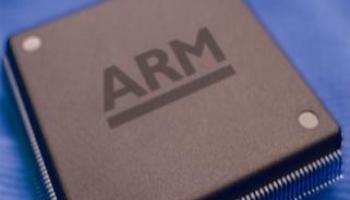

Chip maker ARM is reaching out to compete with Intel in the multicore processor market. The Cortex-A15 MPCore claims five times the speed of current smartphone processors at 2.5GHz.
Although designed for smartphones, the company has its eyes on high-end digital home entertainment devices, wireless base stations and enterprise infrastructure products as possible applications. Even small servers have been mentioned.
“The launch of the Cortex-A15 MPCore processor marks the beginning of an entirely new era for the ARM Partnership,” said Mike Inglis, ARM’s executive vice president and general manager of the processor division. “The Cortex-A15 MPCore processor will become the next major step along the industry’s energy-efficient computing roadmap and open up a wide range of new application possibilities for our partners.”
This latest member of the Cortex-A series offers hardware support for operating system virtualisation, soft-error recovery, larger memory addressability and system coherency, the company claimed. It has been designed to be a multipurpose, power-efficient chip which is compatible with the current members of the processor family.
On the technical side, the A15 has an out-of-order superscalar pipeline with a tightly-coupled low-latency Level-2 cache which can be up to 4MB in size. Additional improvements include better handling of floating point calculations and the faster execution of Neon processes, ARM’s multimedia accelerator and signal processing algorithms.
For system developers, the Cortex-A15 chip will be supported by an optimised ARM Physical IP architecture that was developed specifically for the processor. The optimisations that this provides will enable rapid development of products, initially targeting 32nm and 28nm technologies, but with a roadmap that extends to 20nm.
The chips will not appear in products until 2012 but ARM has started pitching for licensees. Samsung, ST Ericsson and Texas Instruments are current licensee partners who also helped to define the processor to meet what they saw as the key challenges that will face the industry
“We have entered a new era for smart devices where wireless computing solutions bring 3D navigation, augmented reality, HD video filming, high speed broadband and other advanced capabilities to more consumers, enabling our vision of an all-connected world,” said Edgar Auslander, senior vice president for strategic planning at ST-Ericsson.
“Integrated into our leading-edge, system-on-chip solutions, the new ARM core will enable our customers to build extremely power-efficient devices with an unprecedented level of performance,” he added.
American space agency prepares for testing of Boeing's Starliner, to ensure it has two space…
As UK and Europe develop closer military ties, European Commission says it will invest €1.3…
Zuckerberg seeks to revive Facebook's original spirit, as Meta launches Facebook Friends tab, so users…
Notable development for Meta, after appeal against 2021 WhatsApp privacy fine is backed by advisor…
First sign of shake-up under new CEO Lip-Bu Tan? Three Intel board members confirm they…
Trump's nominee for SEC Chairman, Paul Atkins, has pledged a “rational, coherent, and principled approach”…